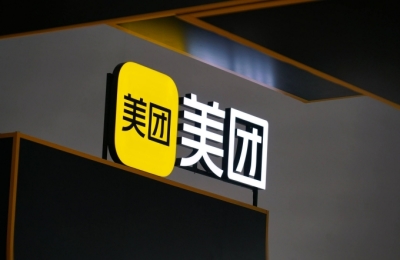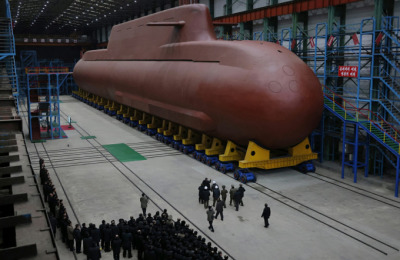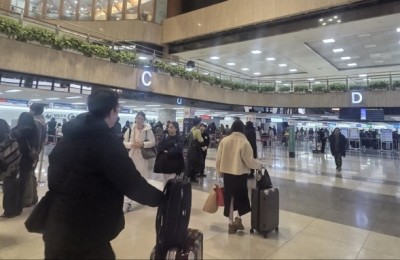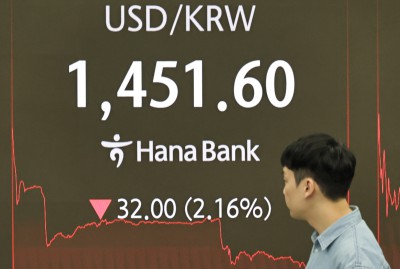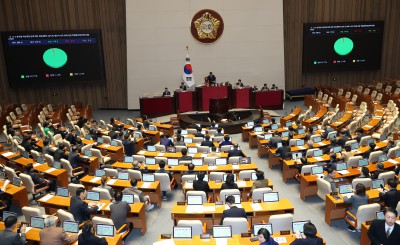At the Montana Economic Development Summit 2007, Butte, Montana
May 1, 2007
Embracing the Challenge of Free Trade: Competing and Prospering in a Global Economy
Trade is as old as humanity, or nearly so. Archaeological sites demonstrate that ancient peoples traded objects such as rare stones and shells across fairly long distances even in prehistoric times (Guisepi, 2000). Over the centuries, with stops and starts, the volume of trade has expanded exponentially, driven in large part by advances in transportation and communication technologies. Steamships replaced sailing ships; railroads succeeded canal barges; the telegraph supplanted the Pony Express. Today, in a world of container ships, jumbo jets, and the Internet, goods and many services are delivered faster and more cheaply (in inflation-adjusted terms) than ever before.1
Today I will discuss the crucial economic benefits we receive from the ongoing expansion of international trade. I will also address the adverse effects of trade and some possible ways to mitigate them. I will argue that one possible response to the dislocations that may result from trade--a retreat into protectionism and isolationism--would be self-defeating and, in the long run, probably not even feasible. Instead, our continued prosperity depends on our embracing the many opportunities provided by trade, even as we provide a helping hand to individuals and communities that may have suffered adverse consequences.
The Benefits of Trade
At the most basic level, trade is beneficial because it allows people to specialize in the goods and services they produce best and most efficiently. For example, we could conceivably all grow our own food and provide our own medical care. But because farming and medicine require special knowledge and skills, a far more efficient arrangement is for the farmer to specialize in growing food and for the doctor to specialize in treating patients. Through the specialization made possible by trade, the farmer can benefit from the doctor's medical knowledge and the doctor can enjoy lunch. The opportunity to trade allows everyone to play to his or her own strengths while benefiting from the productive skills of the whole community. Indeed, economists have demonstrated that trade between two people can be beneficial even if one of them is more skilled than the other at every task, so long as the more-skilled person specializes in those tasks at which he or she is relatively more productive.
What applies to individuals applies to nations as well. Two centuries ago the economist David Ricardo famously observed that, if England specialized in making cloth while Portugal specialized in producing wine, international trade would allow both countries to enjoy more of both goods than would be possible if each country produced only for domestic consumption and did not trade. As in the case of individuals, this conclusion applies even if one country can produce both cloth and wine more cheaply than the other, so long as each country specializes in the activity at which it is relatively more productive. A telling confirmation of Ricardo's insight is that, when nations go to war, their first order of business is often to try to block the other's access to trade. In the American Civil War, the North won in large part because its blockade of Southern ports prevented the Confederacy from exporting its cotton. In the twentieth century, the fact that Great Britain and its allies were able to disrupt German trade more successfully than Germany could impede the flow of goods into and out of Great Britain bore importantly on the ultimate outcomes of both world wars.
Patterns of trade are determined by variations in a number of factors, including climate, the location of natural resources, and the skills and knowledge of the population. I suppose that one could grow roses commercially here in Montana for Valentine's Day, but it would likely require climate-controlled greenhouses complete with artificial lighting--very expensive. A much less costly solution is for Montanans to grow and sell wheat, then use the proceeds to buy roses from localities where the weather is balmy in February.
This is all standard textbook material, and it may well leave you unconvinced of the importance of international trade. After all, the United States is a big country, and we can certainly achieve many of the benefits of specialization by trading within our own borders. How important is it for the health of our economy to trade actively with other countries? As best we can measure, it is critically important. According to one recent study that used four approaches to measuring the gains from trade, the increase in trade since World War II has boosted U.S. annual incomes on the order of $10,000 per household (Bradford, Grieco, and Hufbauer, 2006).2 The same study found that removing all remaining barriers to trade would raise U.S. incomes anywhere from $4,000 to $12,000 per household. Other research has found similar results. Our willingness to trade freely with the world is indeed an essential source of our prosperity--and I think it is safe to say that the importance of trade for us will continue to grow.
In practice, the benefits of trade flow from a number of sources. By giving domestic firms access to new markets, trade promotes efficient specialization, permits economies of scale, and increases the potential returns to innovation.3 U.S. firms increasingly seek to expand production and profits through new export opportunities; indeed, U.S. exports grew about 9 percent in real (that is, inflation-adjusted) terms last year. Export-oriented U.S. manufacturing industries include producers of aircraft, construction equipment, plastics, and chemicals. The United States also excels in the manufacture and export of sophisticated capital goods and scientific equipment. Outside of manufacturing, a number of U.S. high-tech companies, including software developers and online service providers, are world leaders in their fields. American films and music attract large worldwide audiences. Montana's exports include wheat, metal ores, and high-tech materials that are critical to the production of semiconductors.
Firms that emphasize exports are among America's most dynamic and productive companies. Relative to firms that produce strictly for the domestic market, exporters tend to be more technologically sophisticated and to create better jobs. Among U.S. manufacturers, for example, exporters pay higher wages and add jobs more rapidly than non-exporters (Bernard and Jensen, 1999). A significant portion of U.S. international trade is conducted by multinational firms; studies show that these firms generally pay higher wages than purely domestic firms, both in the United States and in developing countries (Doms and Jensen, 1998; Bhagwati, 2004, p. 172). U.S. firms with a global reach tend to be better diversified and are better able to respond to new market opportunities wherever they may arise.
Exports are important, but so are imports. Without trade, some goods would be extremely expensive or not available at all, such as the Valentine's Day roses of my earlier example or out-of-season fruits and vegetables. Trade also makes goods available in more brands and varieties; examples include automobiles, consumer electronics, garments and footwear, wines, and cheeses. One of the great attractions of globalization is that it brings to consumers the best of many cultures. And of course, global trade allows many types of goods, especially consumer goods, to be purchased at lower prices. Lower prices help all consumers but may be especially helpful to those with tight budgets. Indeed, a number of the large, import-intensive retail chains in the United States are focused on low- and moderate-income consumers, who benefit from being able to buy a wide variety of lower-priced goods.
Another substantial benefit of trade is the effect it tends to have on the productivity of domestic firms and on the quality of their output.4 By creating a global market, trade enhances competition, which weeds out the most inefficient firms and induces others to improve their products and to produce more efficiently. The U.S. manufacturing sector, which is perhaps the sector most exposed to international competition, has achieved truly remarkable increases in its productivity in the past decade or so. In addition, international supply chains, made possible by advances in communication and transportation, reduce costs and increase the competitiveness of U.S. firms. Trade also promotes the transfer of technologies, as when multinational firms or transplanted firms bring advanced production methods to new markets.
Trade and finance are closely linked and mutually supporting, and in recent decades international financial flows have grown even more quickly than trade volumes. The globalization of finance plays to the strengths of U.S. financial institutions and financial markets. The United States has a large surplus in trade in financial services, and U.S. firms are leaders in providing banking, investment, and insurance services to the world. Financial openness allows U.S. investors to find new opportunities abroad and makes it possible for foreigners to invest in the United States. The ability to invest globally also permits greater diversification and sharing of risk.
Trade benefits advanced countries like the United States, but open trade is, if anything, even more important for developing nations. Trade and globalization are lifting hundreds of millions of people out of poverty, especially in Asia, but also in parts of Africa and Latin America (Bhagwati, 2004). As a source of economic growth and development in poor countries, trade is proving far more effective than traditional development aid (Easterly, 2006). The transition economies of central and eastern Europe have also benefited greatly from trade, especially trade with the rest of the European Union. A recent study by the World Bank compared two groups of developing countries, dubbed the "globalizers" and the "nonglobalizers." Collectively, the globalizers have doubled the ratio of trade to their gross domestic product (GDP) over the past twenty years, in part because of sharp cuts in tariffs on imports; the nonglobalizers, collectively, have seen a decline in their trade-to-GDP ratio over the same period (Dollar and Kraay, 2004). Among the globalizers, economic growth accelerated from 2.9 percent per year in the 1970s, to 3.5 percent in the 1980s, to 5 percent in the 1990s. In contrast, the nonglobalizers have seen their growth decline from 3.3 percent per year in the 1970s to 0.8 percent in the 1980s and 1.4 percent in the 1990s. The study also found that, among the globalizers, absolute poverty declined significantly and the degree of income inequality changed little.5
If trade is so beneficial, why do we sometimes see political resistance to freer, more open trade? Notably, negotiations in the so-called Doha Round of trade talks now under way have proceeded very slowly, notwithstanding a consensus among economists that all countries involved would enjoy substantial benefits from further trade liberalization. One important reason is that, although trade increases overall prosperity, the benefits for some people may not exceed the costs, at least not in the short run. Clearly, the expansion of trade helps exporting firms and their workers. As consumers, nearly all of us benefit from trade by gaining access to a broader range of goods and services. But some of us, such as workers in industries facing new competition from imports, are made at least temporarily worse off when trade expands. Because the benefits of trade are widely diffused and often indirect, those who lose from trade are often easier to identify than those who gain, a visibility that may influence public perceptions and the political process. That said, the job losses and worker displacement sometimes associated with expanded trade are a legitimate economic and social issue. In the remainder of my remarks, I will focus on the impact of trade on U.S. jobs--both positive and negative--and discuss some possible policy responses.
Trade and Jobs
Does opening U.S. markets to foreign producers destroy jobs at home? The expansion of trade or changes in trading patterns can indeed destroy specific jobs. For example, foreign competition has been an important factor behind declining employment in the U.S. textile industry, including in my home state of South Carolina. Job loss--from any cause--can create hardship for individuals, their families, and their communities. I will return shortly to the question of how we should respond to the problem of worker displacement.
For now, however, I will point out that trade also creates jobs--for example, by expanding the potential market overseas for goods and services produced in the United States, as I have already discussed. Trade creates jobs indirectly as well, in support of export activities or as the result of increased economic activity associated with trade. For example, gains in disposable income created by lower consumer prices and higher earnings in export industries raise the demand for domestically produced goods and services. Domestic production and employment are also supported by expanded access to raw materials and intermediate goods. The U.S. jobs created by trade also tend to offer higher pay and demand greater skill than the jobs that are destroyed--although a downside is that, in the short run, the greater return to skills created by trade may tend to increase the wage differential between higher-skilled and lower-skilled workers and thus contribute to income inequality (Bernanke, 2007).
The effects of trade on employment must also be put in the context of the remarkable dynamism of the U.S. labor market. The amount of "churn" in the labor market--the number of jobs created and destroyed--is enormous and reflects the continuous entry, exit, and resizing of firms in our ever-changing economy. Excluding job layoffs and losses reversed within the year, over the past decade an average of nearly 16 million private-sector jobs have been eliminated each year in the United States, an annual loss equal to nearly 15 percent of the current level of nonfarm private employment.6 The vast majority of these job losses occur for a principal reason other than international trade (Kletzer, 2001; Bernanke, 2004). Moreover, during the past ten years, the 16 million annual job losses have been more than offset by the creation of about 17 million jobs per year--some of which, of course, are attributable to the direct and indirect effects of trade. Truly, the U.S. labor market exhibits a phenomenal capacity for creative destruction.
If trade both destroys and creates jobs, what is its overall effect on employment? The answer is, essentially none. In the long run, the workings of a competitive labor market ensure that the number of jobs created will be commensurate with the size of the labor force and with the mix of skills that workers bring. Thus, in the long run, factors such as population growth, labor force participation rates, education and training, and labor market institutions determine the level and composition of aggregate employment. To see the irrelevance of trade to total employment, we need only observe that, between 1965 and 2006, the share of imports in the U.S. economy nearly quadrupled, from 4.4 percent of GDP to 16.8 percent. Yet, reflecting growth in the labor force, employment more than doubled during that time, and the unemployment rate was at about 4-1/2 percent at both the beginning and end of the period. Furthermore, average real compensation per hour in the United States has nearly doubled since 1965.
Although many readily accept that balanced trade does not reduce aggregate employment, some might argue that the United States' current large trade deficit must mean that the number of U.S. jobs has been reduced on net. However, the existence of a trade deficit or surplus, by itself, does not have any evident effect on the level of employment. For example, across countries, trade deficits and unemployment rates show little correlation. Among our six Group of Seven partners (the world's leading industrial countries), three have trade surpluses (Canada, Germany, and Japan). However, based on the figures for February of this year, the unemployment rates in Canada (5.3 percent) and in Germany (9.0 percent) are significantly higher than the 4.5 percent rate in the United States; and Japan's unemployment rate, at 4.0 percent, is only a bit lower.7 Factors such as the degree of flexibility in the labor market, not trade, are the primary source of these cross-country variations in unemployment.
What About Outsourcing Abroad?
The debate about the effects of trade on employment has been intensified by the phenomenon of outsourcing abroad, or "offshoring." Offshoring has been driven by several factors, including improvements in international communication, the computerization and digitization of some business services, and the existence of educated, often English-speaking workers abroad who will perform the same services for less pay. A portion, though not all, of these wage differentials reflects differences in skills and productivity; for example, outsourced programming work is usually simpler and more routine than programming done in the United States.
The increase in outsourcing abroad has led to dire predictions about a wholesale "export" of U.S. jobs in coming years. Although globalization and trade will continue to be forces for economic change, concerns about a massive loss of jobs due to offshoring do not seem justified. Companies have found outsourcing abroad profitable primarily for jobs that can be routinized and sharply defined. Certainly, advancing technology will continue to increase the feasibility of providing services from remote locations. For the foreseeable future, however, most high-value work will require creative interaction among employees, interaction which is facilitated by physical proximity and personal contact. Moreover, in many fields, closeness to customers and knowledge of local conditions are also of great importance. These observations suggest that, for some considerable time, outsourcing abroad will be uneconomical for many types of jobs, particularly high-value jobs.8
Moreover, a balanced discussion of outsourcing abroad should reflect that, just as U.S. firms use the services of foreigners, foreign firms make considerable use of the services of U.S. residents. Many do not realize that, in contrast to its trade deficit in goods, the United States runs a significant trade surplus in services--particularly in business, professional, and technical services. This country provides many high-value services to users abroad, including financial, legal, engineering, architectural, and software development services, whereas many of the services imported by U.S. companies are less sophisticated and hence of lower value.9 A recent study of twenty-one occupations that are most likely to be affected by outsourcing found that net job losses were concentrated almost exclusively in the lower-wage occupations and that strong employment gains have occurred in the occupations that pay the highest wages.10 Further expansion of trade in services will help, not hurt, the U.S. economy and the labor market.
Just as discussions of the outsourcing of business services tend to ignore the services U.S. firms sell to other countries, so do discussions of the movement of jobs offshore ignore the fact that foreign firms also move jobs to the United States. Between 1996 and 2004 (the most recent data available), the employment of U.S. residents by majority-owned nonbank affiliates of foreign companies operating within the United States increased by about 1 million jobs. In 2004, U.S. affiliates of foreign companies accounted for more than $500 billion in value added (about half in manufacturing) and about $180 billion in exports. Globalization and offshoring work both ways.
Responding to Job Displacement
Although trade has many positive effects in the labor market, nothing I have said this morning is intended to minimize the real costs imposed on workers and communities when new competition from abroad leads to job losses and displacement. What can be done to help workers who lose their jobs as a consequence of expanded trade?
Restricting trade by imposing tariffs, quotas, or other barriers is exactly the wrong thing to do. Such solutions might temporarily slow job loss in affected industries, but the benefits would be outweighed, typically many times over, by the costs, which would include higher prices for consumers and increased costs (and thus reduced competitiveness) for U.S. firms. Indeed, studies of the effects of protectionist policies almost invariably find that the costs to the rest of society far exceed the benefits to the protected industry. In the long run, economic isolationism and retreat from international competition would inexorably lead to lower productivity for U.S. firms and lower living standards for U.S. consumers (Bernanke, 2004).
The better approach to mitigating the disruptive effects of trade is to adopt policies and programs aimed at easing the transition of displaced workers into new jobs and increasing the adaptability and skills of the labor force more generally. Many suggestions for such policies have been made. Currently, the government's principal program for helping workers displaced by trade is the Trade Adjustment Assistance program, which is up for renewal before the Congress this year. As now structured, the program offers up to two and a half years of job training, allowances for job search and relocation, income support for eligible workers, and health insurance assistance for some. Elements of other proposals being discussed (Kletzer and Rosen, 2006; Kling, 2006; Mann 2003, 2004) include job-training tax credits and wage insurance, which would help offset pay cuts that often occur when displaced workers change jobs. Another approach is to focus on establishing policies that reduce the cost to workers of changing jobs, for example, by increasing the portability of pensions or health insurance between employers. As new technologies expand the range of occupations that may be subject to international competition, measures to assist affected workers become all the more important. It would not be appropriate for me to endorse specific programs; that is the prerogative of the Congress. However, I can safely predict that these and other policy proposals to address concerns about worker displacement will be the subject of active debate in coming years.
More generally, investing in education and training would help young people entering the labor force as well as those already in mid-career to better manage the ever-changing demands of the workforce (Bernanke, 2007). A substantial body of research demonstrates that investments in education and training pay high rates of return to individuals and to society as a whole (Acemogulu and Angrist, 2001; Becker, 1964; Card, 1999; Topel, 2004). Importantly, workforce skills can be improved not only through K‑12 education, college, and graduate work but also through a variety of expeditious, market-based channels such as on-the-job training, coursework at community colleges and vocational schools, extension courses, and online training. An eclectic, market-responsive approach to increasing workforce skills is the most likely to be successful.
Whatever the specific approaches chosen, helping workers who have lost jobs--whether because of trade or other causes--to find new productive work is good for the economy as well as for the affected workers and their families. Moreover, if workers and their families are less fearful of change, political pressure in favor of trade barriers or other measures that would reduce the flexibility and dynamism of the U.S. economy would be reduced (Kull, 2004).
Conclusion
To sum up, international trade in goods, services, and assets, like other forms of market-based exchange, allows us to transform what we have into what we need or want under increasingly beneficial terms. Trade allows us to enjoy both a more productive economy and higher living standards.
Of course, current trading arrangements are far from perfect. Some features of the world trading regime, such as excessive restrictions on trade in services and the uneven protection of intellectual property rights, are both unfair and economically counterproductive. Working through the World Trade Organization or in other venues, we should continue to advocate the elimination of trade distortions and barriers in our trading partners even as we increase the openness of our own economy. We should also work to ensure that both we and our trading partners live up to existing agreements under the World Trade Organization. When trading partners do not meet their obligations, we should vigorously press our case. Ultimately, a freer and more open trading system is in everyone's best interest.
Although expansion of trade makes the U.S. economy stronger, as I have noted today, the broad benefits of trade and the associated economic change may come at a cost to some individuals, firms, and communities. We need to continue to find ways to minimize the pain of dislocation without standing in the way of economic growth and change. Indeed, the willingness to embrace difficult challenges is a defining characteristic of the American people. With our strong institutions, deep capital markets, flexible labor markets, technological leadership, and penchant for entrepreneurship and innovation, no country is better placed than the United States to benefit from increased participation in the global economy. If we resist protectionism and isolationism while working to increase the skills and adaptability of our labor force, the forces of globalization and trade will continue to make our economy stronger and our citizens more prosperous.
References
Acemoglu, Daron, and Joshua Angrist (2001). "How Large Are Human Capital Externalities? Evidence from Compulsory Schooling Laws," in Ben S. Bernanke and Kenneth Rogoff, eds., NBER Macroeconomics Annual. Cambridge, Mass.: MIT Press, pp. 9-59.
Becker, Gary S. (1964). Human Capital: A Theoretical and Empirical Analysis with Special Reference to Education. New York: National Bureau of Economic Research.
Bernanke, Ben S. (2004). "Trade and Jobs," speech delivered at the Distinguished Speaker Series, Fuqua School of Business, Duke University, March 30, http://www.federalreserve.gov/boarddocs/speeches/2004/20040330/default.htm
______ (2006). "Global Economic Integration: What's New and What's Not?" speech delivered at the thirtieth annual economic symposium sponsored by the Federal Reserve Bank of Kansas City, Jackson Hole, Wyo., August 25, http://www.federalreserve.gov/boarddocs/speeches/2006/20060825/default.htm
______ (2007). "The Level and Distribution of Economic Well-Being," speech delivered at the Greater Omaha Chamber of Commerce, February 6, http://www.federalreserve.gov/boarddocs/speeches/2007/20070206/default.htm
Bernard, Andrew B., and J. Bradford Jensen (1999). "Exceptional Exporter Performance: Cause, Effect, or Both?" Journal of International Economics, vol. 47 (February), pp. 1-25.
Bernard, Andrew B., J. Bradford Jensen, and Peter K. Schott (2006). "Trade Costs, Firms, and Productivity," Journal of Monetary Economics, vol. 53 (July), pp. 917-37.
Bhagwati, Jagdish (2004). In Defense of Globalization. New York: Oxford University Press.
Bradford, Scott C., Paul L. E. Grieco, and Gary Clyde Hufbauer (2006). "The Payoff to America from Globalisation," The World Economy, vol. 29 (July), pp. 893-916.
Card, David (1999). "The Causal Effect of Education on Earnings," in Orley Ashenfelter and David Card, eds., Handbook of Labor Economics, vol. 3A. New York: Elsevier, pp. 1801-63.
Cox, Michael, and Richard Alm (2007). "The Best of All Worlds: Globalizing the Knowledge Economy," in Federal Reserve Bank of Dallas, 2006 Annual Report, pp. 3-28.
Davis, Steven, John Haltiwanger, and Scott Schuh (1996). Job Creation and Destruction. Cambridge, Mass.: MIT Press.
Dollar, David, and Aart Kraay (2004). "Trade, Growth, and Poverty," The Economic Journal, vol. 114 (February), pp. F22-F49.
Doms, Mark E., and J. Bradford Jensen (1998). "Comparing Wages, Skills, and Productivity between Domestically and Foreign-Owned Manufacturing Establishments in the United States," in Robert E. Baldwin, Robert E. Lipsey, and J. David Richardson, eds., Geography and Ownership as Bases for Economic Accounting. Chicago: University of Chicago Press.
Easterly, William (2006). The White Man's Burden: Why the West's Efforts to Aid the Rest Have Done So Much Ill and So Little Good. New York: Penguin Press.
Guisepi, Robert A. (2000). "The Stone Age: The General Picture," International World History Project, http://history-world.org/stone_age2.htm (accessed April 13, 2007)
Hummels, David (2006). "Transportation Costs and Trade over Time," in David Hummels, Anthony Venables, Harry Broadman, and John S. Wilson, rapporteurs, Transport and International Trade: Round Table 130. Organisation for Economic Co-operation and Development and European Conference of Ministers of Transport. Paris: OECD.
Institute of International Education (2006). "New Enrollment of Foreign Students in the U.S. Climbs in 2005/06," press release, November 13, http://opendoors.iienetwork.org/?p=89251.
Kletzer, Lori G. (2001). Job Loss from Imports: Measuring the Costs. Washington: Institute for International Economics.
Kletzer, Lori G., and Howard Rosen (2006). "Reforming Unemployment Insurance for the Twenty-First Century Workforce," Hamilton Project Discussion Paper. Washington: Brookings Institution, September.
Kling, Jeffrey R. (2006). "Fundamental Restructuring of Unemployment Insurance: Wage-Loss Insurance and Temporary Earnings Replacement Accounts," Hamilton Project Discussion Paper. Washington: Brookings Institution, September.
Kull, Steven (2004). Americans on Globalization, Trade, and Farm Subsidies , The American Public on International Issues, PIPA/Knowledge Networks Poll, Program on International Policy Attitudes and Knowledge Networks, January 22, www.pipa.org/OnlineReports/Globalization/GlobalTradeFarm_Jan04/GlobalTradeFarm_Jan04_rpt.pdf (900 KB PDF).
Mann, Catherine L. (2003). "Globalization of IT Services and White Collar Jobs: The Next Wave of Productivity Growth," International Economics Policy Briefs PB03-11. Washington: Institute for International Economics, December, www.iie.com/publications/pb/pb03-11.pdf (389 KB PDF).
______ (2004). "Global Sourcing and High-Tech Jobs: Productivity Gains and Policy Challenges," presentation on "White Collar Outsourcing" at the Institute for International Economics, March 11, www.iie.com/publications/papers/mann0304.pdf (138 KB PDF).
______ (2006). Accelerating the Globalization of America: The Role for Information Technology, with Jacob Funk Kirkegaard. Washington: Institute for International Economics.
Topel, Robert (2004). "The Private and Social Values of Education," in Education and Economic Development, proceedings of a conference held at the Federal Reserve Bank of Cleveland, November 18-19, pp. 47-57, www.clevelandfed.org/research/conferences/2004/November/cbook.pdf (891 KB PDF).
Footnotes
1. Hummels (2006). Bernanke (2006) provides a brief history of globalization.
2. The estimates ranged from $7,000 to $13,000.
3. Cox and Alm (2007) discuss the benefits of trade in the modern global economy.
4. Bernard and Jensen (1999) find that exporting firms are more productive than non-exporters. Bernard, Jensen, and Schott (2006) document the tendency of trade to reduce production at low-productivity plants and to increase output at high-productivity plants in the United States, a shift that raises average productivity.
5. Refer also to Bhagwati (2004).
6. According to the Bureau of Labor Statistics (BLS), over the past ten years, gross job losses in the United States have averaged about 7.8 million per quarter. Multiplying 7.8 million by 4 suggests that about 31 million U.S. jobs come to an end each year. This figure includes temporary layoffs, seasonal closings, and other short-term job losses; some research suggests that longer-term job losses amount to about half of the total (Davis, Haltiwanger, and Schuh, 1996). Dividing 31 million gross job losses by 2 yields about 16 million long-term job losses each year.
7. February 2007 is the latest month for which these rate comparisons are available. The data are from the Bureau of Labor Statistics, which has adjusted them to approximate the U.S. definition of unemployment.
8. The economic importance of physical proximity is the underlying reason that people and businesses are willing to pay high rents and other costs to live in or near major cities, where they can be near large numbers of other people and businesses that have related expertise and interests.
9. Another type of service in which the United States has a strong export position is higher education. In 2005-06, U.S. institutions of higher learning trained nearly 600,000 foreign students, of whom about half were studying for graduate and professional degrees. Many foreign students who study in the United States spend at least some time here subsequently, adding their skills to those of the domestic workforce (Institute of International Education, 2006).
10. Mann (2006, pp. 140-41) analyzes changes from 1999 to 2004. Updating the analysis with 2005 data from the Bureau of Labor Statistics does not change these results. Some of the low-wage occupations, such as data entry and word processing, may have lost jobs to automation rather than outsourcing.









